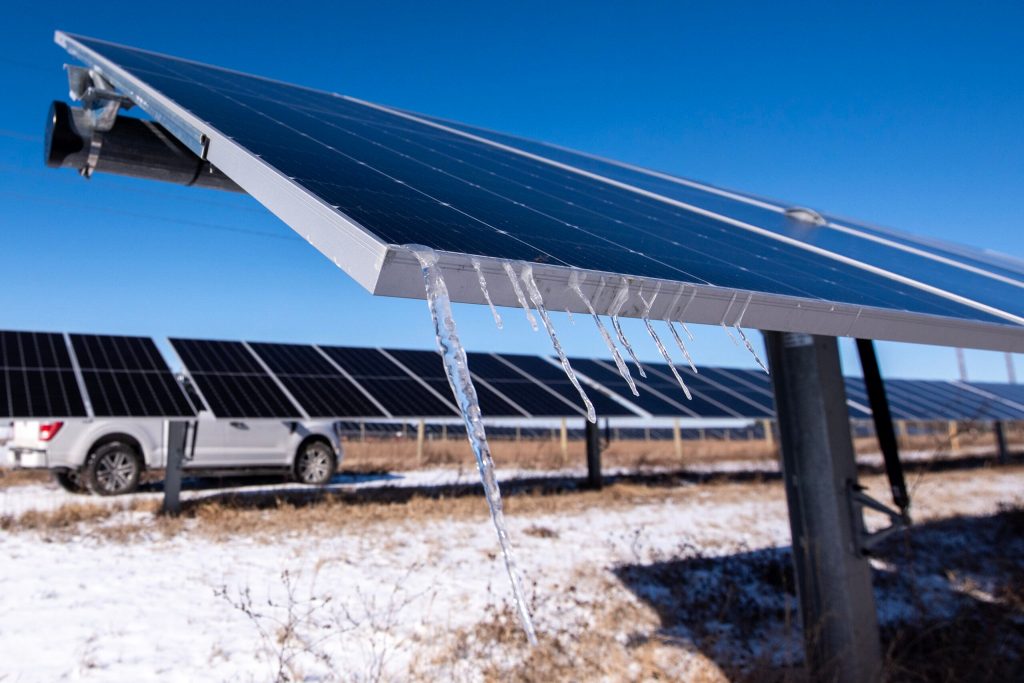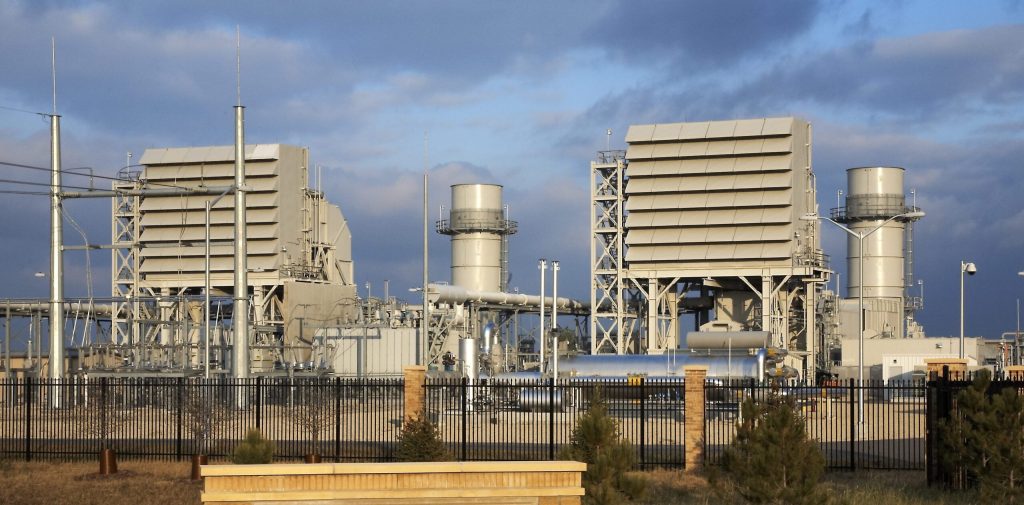We Energies Plans Nine Power Projects With $5.5 Billion Cost
Utility wants to build 7 solar projects, 2 new gas plants to create almost three gigawatts of new power.
To meet expected surges in energy demand from data centers, We Energies is asking state regulators to approve a multi-billion-dollar plan to add almost three gigawatts of power to the electric grid.
The utility plans to build and take ownership stakes in seven planned solar projects and one battery project. It also wants to do the same with two new natural gas power plants, as well as make upgrades to existing power facilities.
The solar projects together would have a generation capacity of more than 1.1 gigawatts, according to filings with the PSC. The battery project would store 180 megawatts. The natural gas projects would have a combined capacity of around 1.4 gigawatts.
For context, 1 gigawatt is enough energy to power 100 million LED Bulbs, or about half the energy generated by the Hoover Dam, according to the U.S. Department of Energy.
Several data center developments are either underway or planned in We Energies’ service territory in Mount Pleasant, Kenosha and Port Washington.
Data centers are energy intensive buildings, consuming 10 to 50 times the energy per floor space of a commercial office building. Just the first phase of Microsoft’s Mount Pleasant data center campus is expected to need more power than all of the homes in Milwaukee.
In a statement, We Energies President Mike Hooper said the new power plants will help meet that demand while strengthening Wisconsin’s workforce and energy grid.
“Together, these plants and the data centers they power will create thousands of construction jobs and hundreds of full-time high-tech and energy careers,” Hooper said. “And under our customer protection plan, we’re making sure costs to serve new data centers are not shifted to other customers.”
Earlier this year, We Energies asked state utility regulators to approve special rates for data centers that would require data centers to pay for the power they consume, as well as their share of the cost of power plants and distribution facilities built to serve them. The utility asked regulators to approve the proposal by the end of the year.
Brendan Conway, a spokesperson for We Energies, said data centers would be on the hook to pay for the share of energy they receive from a given power plant or solar farm.
But Tom Content, executive director of the Citizens Utility Board of Wisconsin, said he’s skeptical that costs related to powering data centers won’t affect customers, especially because We Energies announced “a huge number of new projects.”
He said the tech companies behind the data centers may pay for all of their own power, but there’s a risk the utility could expand the system beyond what tech companies need.
“Then there’s added costs on the horizon for the rest of the We Energies’ customers. And all these projects wouldn’t be built if there weren’t this wave of data centers coming into Wisconsin,” he said. “It’s just common sense that there are concerns that costs could certainly be impacted by this.”
Beyond data centers, Conway said the plan also supports load growth from other economic development in Wisconsin.
The new proposals are in addition to two other new power plant projects the utility is pursing. We Energies received PSC approval this past spring to build two new natural gas power plants in southeastern Wisconsin.

Solar panels are on hinges and move to face the sun throughout the day Thursday, Aug. 18, 2022, in Two Rivers, Wis. Angela Major/WPR
We Energies seeks ownership stake in 7 solar projects
We Energies and Madison Gas & Electric together are seeking an ownership stake in five solar projects located in Waushara, Juneau, Oconto, Adams and Wood counties. One of those projects is located in Marquette County, Michigan. The project in Waushara County would also include a battery storage facility.
In each of those projects, We Energies would own 90 percent of the solar development and Madison Gas & Electric would own the remaining 10 percent, according to applications filed with the PSC.
In a statement, Madison Gas & Electric President Jeff Keebler said the partnership will help the Madison utility meet its carbon reduction goals.
“With our current plans, by 2030, we will have added more than 40 renewable generation and battery storage projects since 2015, totaling more than 750 MW, propelling us toward our goal of net-zero carbon electricity by 2050,” Keebler stated.
We Energies and its sister company Wisconsin Public Service are looking to split ownership 50-50 for a 180-megawatt solar project in Jefferson and Walworth counties. The estimated cost of acquiring and constructing that project is $410.8 million, according to the application.
For the seventh project, We Energies is looking to purchase and construct a 100-megawatt solar farm in Jefferson County for around $276.9 million, according to the application.
The developers behind those projects range from Chicago-based Invenergy to Florida-based NextEra Energy Resources.
Dan Krueger is executive vice president of infrastructure and generation planning at WEC Energy Group, the parent company of We Energies. He said the mix of renewables and natural gas reflects the company’s “all of the above” approach to energy generation.
“That’s why we proposed that mix,” he said. “It’s to provide as much energy as we can at the lowest price possible, while making sure that everything is in place to ensure reliability does not flinch.”
According to the applications, We Energies hopes to have all seven solar projects in service by the end of 2029, though some could come into service by the end of 2028.
We Energies asks to build 2 more natural gas plants
We Energies also filed applications to acquire the Foundry Ridge Energy Center in Walworth County and the Red Oak Ridge Energy Center in Kenosha County, a pair of proposed natural gas plants being developed by Invenergy.
The cost of acquiring and constructing the 270-megawatt Foundry Ridge project is about $564.2 million, according to We Energies’ application. Meanwhile, the cost of acquiring and building the 1.1 gigawatt Red Oak Ridge project is about $1.77 billion, the application for that project states.
Krueger said We Energies and Invenergy have worked together in the past on projects like the Paris Solar Farm in Kenosha County, and have a strong partnership. He said the natural gas projects will help ensure the reliability of the energy grid.
“When there’s a gap that just can’t be met, and we need power very quickly, these plants are going to come online. They’re going to fill those energy needs and then we’ll bring them back offline as soon as possible,” he said.
Both projects faced opposition from state environmental groups. Criticisms include concern that burning more fossil fuels will worsen the effects of climate change and lead to more pollution.
Krueger said it’s not realistic for the utility to meet all of the expected demand growth purely with renewable energy.
“We can’t control when the sun shines, we can’t control when the wind blows —and we try to make the most of both of them and how they overlap,” he said. “Our first obligation to our customers is to make sure the power is always there no matter what the weather is.”
In addition to the new plants and solar farms, Krueger said We Energies is also investing in upgrades to a natural gas plant in Port Washington that will allow the plant produce more power in the summer months, and upgrading its coal-fired Elm Road Generating Station in Oak Creek to be able to run on both coal and natural gas.
We Energies hopes to add almost 3GW to the electric grid to help meet data center demand was originally published by Wisconsin Public Radio.
If you think stories like this are important, become a member of Urban Milwaukee and help support real, independent journalism. Plus you get some cool added benefits.






















